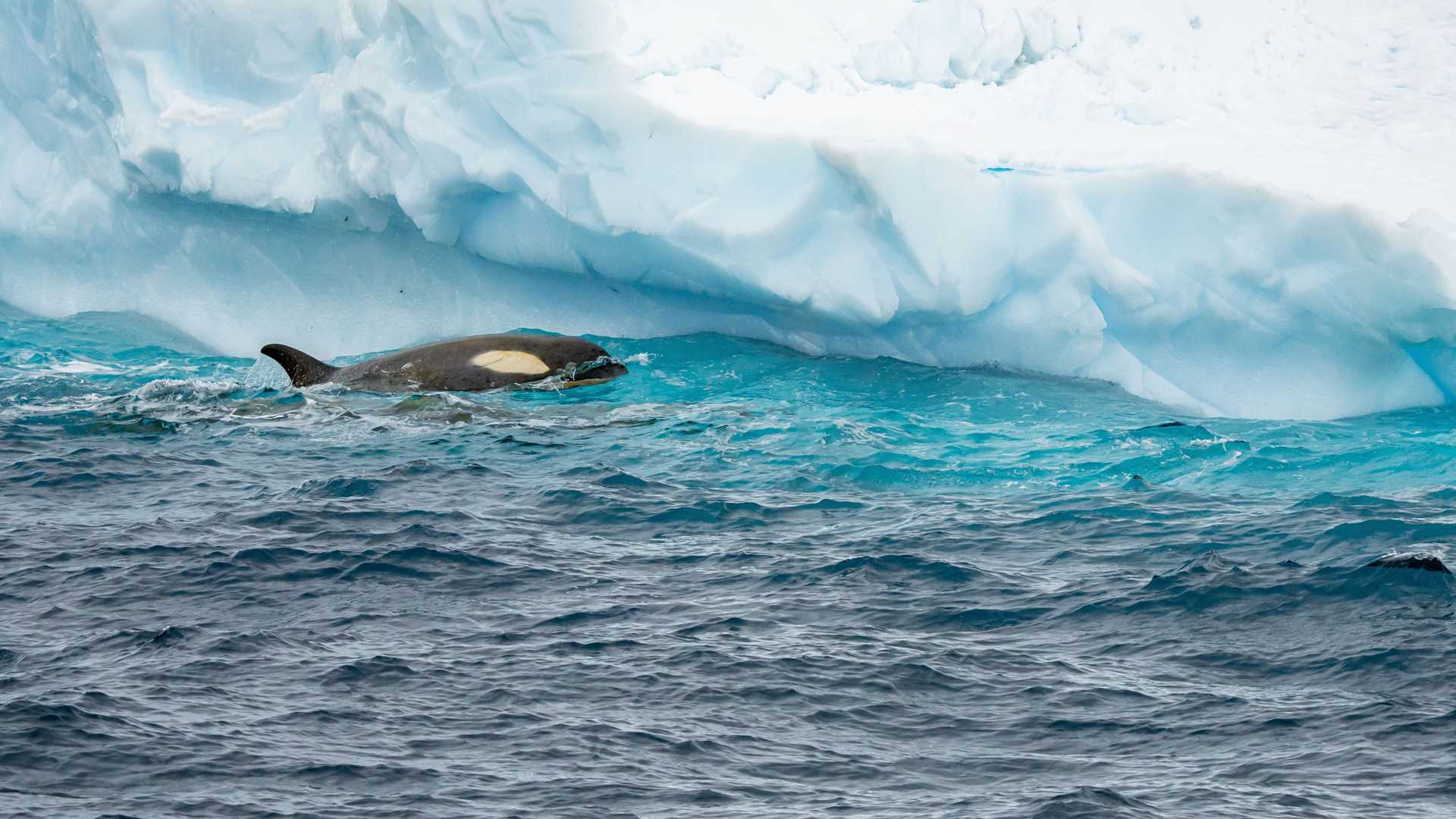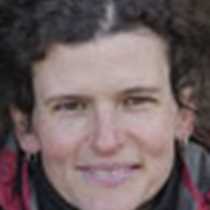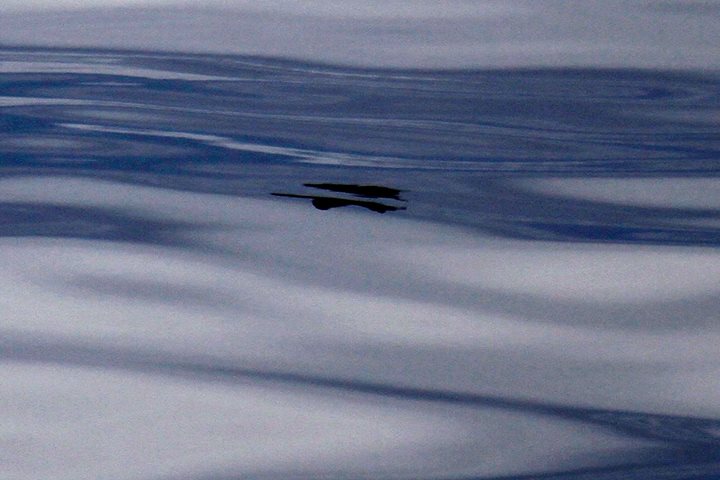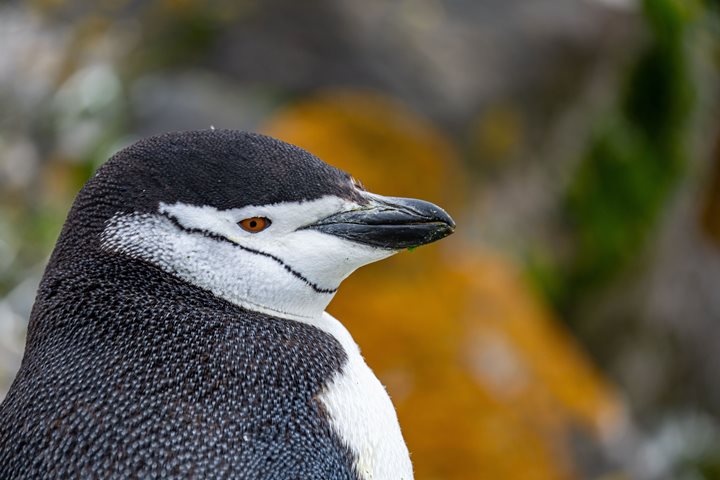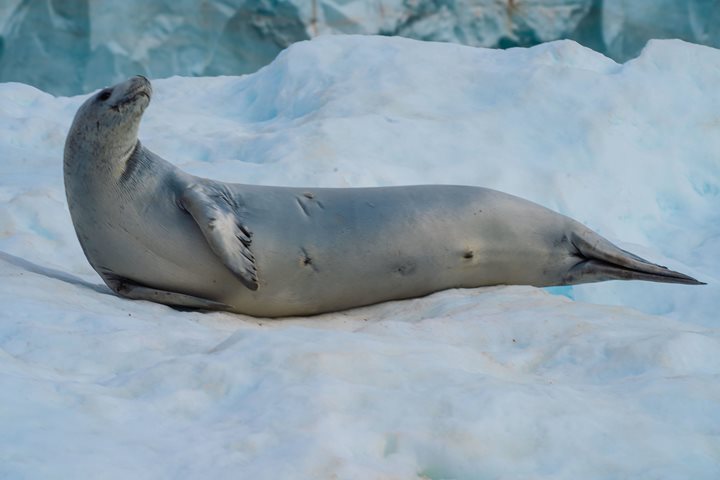Half an hour earlier than expected this morning, our expedition leader’s call came over the PA system: “Good morning, good morning! Killer whales! Get up!” So we did.
From the outer decks, we observed a large group of little type B killer whales, perhaps 20 individuals. We see this type of whale most often, and it is always a thrill. From their dorsal fins, we distinguished adult males, females, and youngsters. Also called orcas, these whales are actually large dolphins. They eat a variety of prey, including penguins. When we spotted a dense group of porpoising gentoos nearby, we wondered if the hunt was on. Instead, we saw something even more interesting. Two of the orcas swam up to an iceberg and then rubbed up against it. It seemed clear they were there for a good scratch. The turquoise colors from the ice made a beautiful contrast to the whales’ black, grey, and white coloring.
After breakfast, we had another surprise. At the head of Wilhelmina Bay, we found a stretch of shore-fast sea ice that was very thick, even this late in the season. The captain and expedition leader gave the go ahead, and we shuttled everyone to the ice for a walk. It is always a memorable experience to stand on the ice, surrounded by glaciers, especially when it comes as a surprise to everyone. It was a great reason to rearrange the day’s plan.
We cruised north for the afternoon, heading to the northern part of the peninsula and the Weddell Sea. We enjoyed a couple of presentations along the way.
By recap time, the light was spectacular. After a few days of winds and clouds, the long, golden, crisp light—unique to the polar regions—came as an extra special gift.

